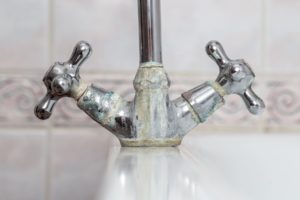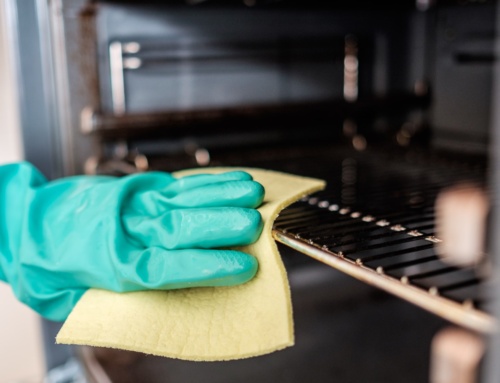
Do you have trouble cleaning your bathroom as thoroughly as you’d like? One of the issues holding many bathrooms back from looking as good as new is limescale, found across surfaces such as sinks, tiles and shower screens.
Would you like to know the best techniques for removing limescale from your bathroom? Here’s everything you need to know.
What is limescale?
Limescale is the term commonly used to describe calcium carbonate, which leaves chalky white deposits and watermarks in areas such as your sinks, toilets and showers. Unfortunately, the effects are often worse in hard water areas where the mineral count is high. You may also notice deposits in the bottom of your kettle or small white marks across bath screens once the water has evaporated or drained.
Why remove limescale from your bathroom?
Limescale isn’t harmful but will start to look unsightly if you don’t tackle its build-up. It can also affect the performance of taps and the efficiency of showerheads if the scale starts to block openings, reducing water pressure in your home. Limescale can affect many parts of your bathroom, including tiles, plugholes, toilet bowls, baths and showerheads – anywhere that comes into frequent contact with warm water!
Best limescale removal methods
Sometimes, it doesn’t matter how hard you wipe over surfaces. Limescale is one of the toughest types of grime to remove, so using tried and tested methods is a must.
There are lots of different ways to tackle limescale, from homemade solutions to shop-bought products. The trick is to use a product that has acidic properties, such as lemon or vinegar. Abrasive chemicals should be avoided unless you know the product is safe to use on bathroom surfaces. Professional cleaners often have favourites they know do a good job without damaging your home.
If using products like lemon juice or vinegar, the acid will take time to work, so simply spraying an area where it will run off won’t work. For example, if you want to remove limescale from your bathroom taps, it’s best to soak a microfibre cloth in the product and wrap it around the treatment area for an hour or so to work its magic. However, if using an off-the-shelf product containing chemicals, you’ll need to follow the instructions closely so that you don’t damage the surface.
Can you prevent limescale?
Limescale will come back time and time again if you don’t keep up with a cleaning regime. For example, shower heads need descaling at least once a month to stop any blockages. Some households may also benefit from using a water softener to reduce limescale build-ups. Start with a deep clean of your home to remove limescale, then implement a regular cleaning routine to maintain the results.
Hire a regular cleaner
Want to prevent issues such as limescale build-up in your bathrooms and kitchens? Hire the Efficient Cleaning team. We work across South West London and Surrey, coming out to properties in Chiswick, Earlsfield and beyond.
For a free consultation and quote, please get in touch.


